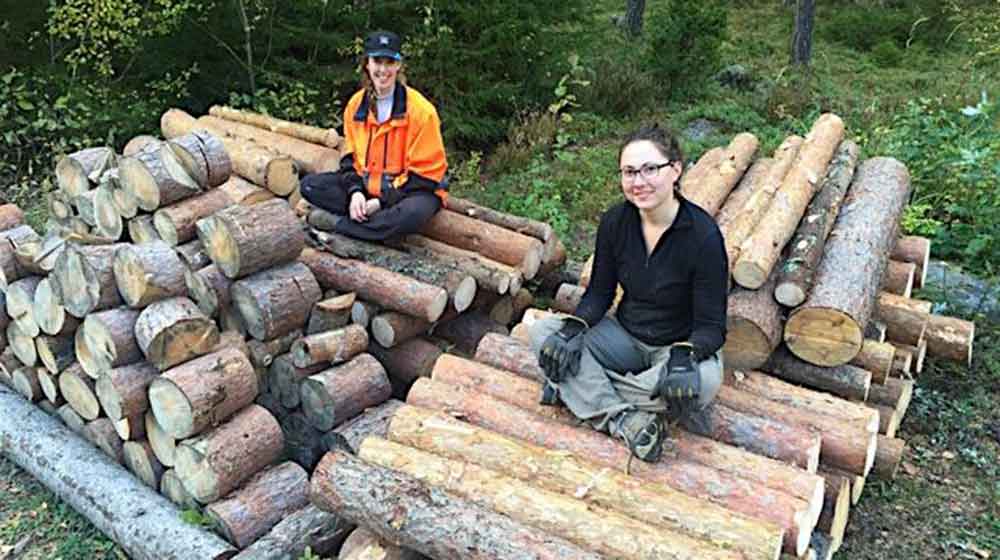SES student Conner Keeffe Blogs about her time at the Newman Institute in Sweden

Most of the week was spent with full days outside enjoying nature and learning about forestry in Sweden. Day One had us in the forest with Bertil, a Swedish forestry pro. Bertil has been in the forestry industry since he was a kid learning from his father, and now teaches people how it all works. We wandered through the forest, learning what makes a place good to keep trees for conservation versus use for growing lumber, how to choose what trees to keep and what trees to cut down, how many trees a healthy forest should have per hectare, and more.
We roasted hotdogs over the fire for lunch, and after lunch we made smoke signals with fresh spruce sprigs over the still hot coals. On Day Two we headed to the Mellanskog office in Uppsala. Mellanskog is the forestry organization that represents forestry workers in central Sweden. We learned a lot while there, including further details on how their industry works, how to use a “brush saw,” and what some of the common trees are.
We learned that pine trees are the most commonly grown in the industry because they are fast-growing, straight, and good wood. Growing expensive wood like oak is a 200 to 300 year investment, while pine could potentially go from seedling to harvest in a lifetime. That’s why we planted 150 pine trees at the Newman Institute forest on Day Four. This may sound like a lot, but we hardly made a dent in the hectare that had been cut, cleared, and prepared for planting! The planting was a lot of fun, especially since we got to wear buckets of trees around our waists!
On Day Five we did quite the opposite, and took down at least 150 trees. We put our brush saw knowledge to work, and cleared out the unwanted trees. It seems counter intuitive to cut down trees to create a healthy forest, but if you want healthy, tall trees to harvest in the future, it is important that they don’t have to compete with many other trees while growing.
The week ended with an optional day of moving some big trees that had been cut down with a chainsaw. A few students participated, and with Fr. Phillip Geister, we moved around 80, 1.5 meter long logs, while others cut them with the chainsaw! It was a ton of work, but so rewarding seeing our big pile at the end of the day!
